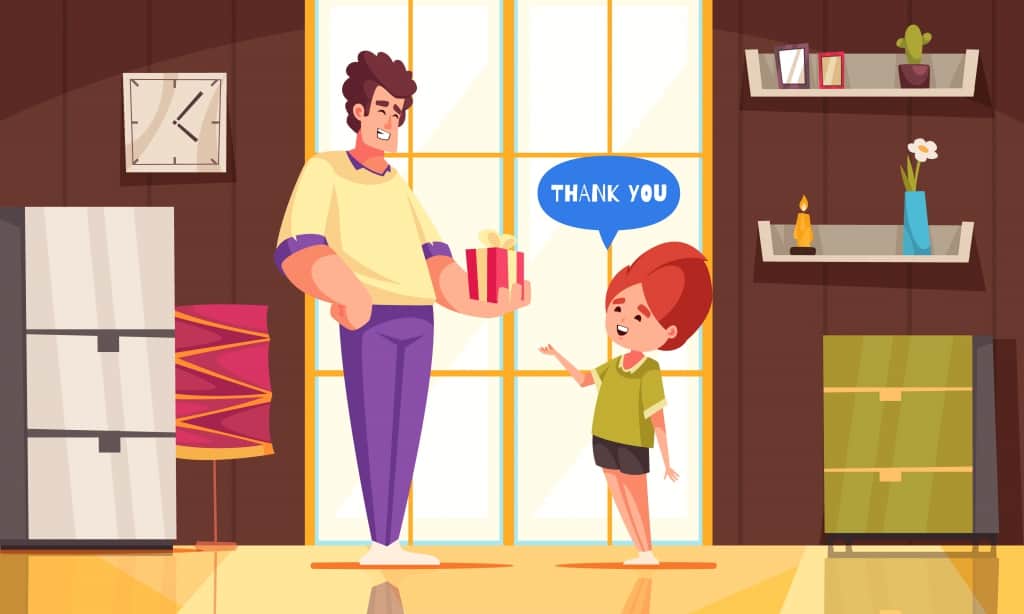The teacher is a knowledge transmitter and an educational psychologist who guides and orients students in the classroom. However, it is a big challenge and requires teachers to have behaviour management strategies. Because they will be a foundation to ensure the success of every lesson, create a positive learning environment, and promote good teaching and learning.
As the name implies, behaviour management strategies include the plans, skills, and techniques teachers or parents use to help children promote good behaviours and limit bad ones. So, in today's article, let's find out the 9 best behaviour management strategies teachers should know!
- 1 - Set Classroom Rules With Students
- 2 - Help Students Understand
- 3 - Limited Time For Activities
- 4 - Stop The Mess With A Little Humour
- 5 - Use Innovative Teaching Methods
- 6 - Turn “Punishment” Into “Reward
- 7 - Three Steps Of Sharing
- 8 - Apply Classroom Management Skills
- 9 - Listen And Understand Your Students
- Final Thoughts

Need More Tips?
- Tools for Educators
- Classroom Management Plan
- Classroom Management Strategies
- Best AhaSlides spinner wheel
- AhaSlides Online Poll Maker – Best Survey Tool
- Random Team Generator | 2024 Random Group Maker Reveals
Brainstorming better with AhaSlides
- 14 Best Tools for Brainstorming at School and Work in 2024
- Idea Board | Free Online Brainstorming Tool
- What is a Rating Scale? | Free Survey Scale Creator
- Host Free Live Q&A in 2024
- Asking Open-ended questions
- 12 Free survey tools in 2024

Start in seconds.
Get free education templates for your ultimate interactive classroom activities. Sign up for free and take what you want from the template library!
🚀 Get Free Templates☁️
1. Set Classroom Rules With Students
The first step to creating behaviour management strategies in the classroom is to involve students in developing classroom rules.
In this way, students will feel respected and responsible for maintaining the classroom rules such as keeping the classroom clean, keeping quiet during class, taking care of the property, etc.
For example, at the beginning of class, the teacher will ask the following questions to guide students in building rules:
- Should we agree that if the class is not noisy, at the end of the class you will be able to draw pictures/gifts?
- Can we both be silent when I put my hand to my lips?
- When the teacher is teaching, can we focus on the board?
Or the teacher should write down the "tips" for being a good listener on the board. Every time a student does not follow, immediately stop teaching and have the student reread the tips.
For Example:
- Ears listen
- Eyes on the teacher
- The mouth does not speak
- Raise your hand when you have a question
Whenever students do not listen to the teacher or do not listen to their classmates, the teacher needs to remind them very seriously. You can have students repeat the tips immediately and thank those with good listening skills.

2. Help Students Understand
At any level, let students understand exactly why they should stop the fuss immediately when the teacher's "keep quiet" signal is given.
In behaviour management strategies, have a conversation and help your students visualise what it would be like if they weren't paying attention during class.For example, you could say, "If you keep talking and playing with toys for hours, you will miss out on knowledge, and then you won't understand why the sky is blue and how the suns rotate. Hmm. That's a pity, isn't it?"
With respect, make students understand that maintaining correct behaviour in the classroom is not for the teacher's authority but for their benefit.

3. Limit Time For Activities
If you already have a detailed plan in your lesson, include a time for each activity. Then tell students what you want them to accomplish in each of those times. When that time limit ends, you will count down 5…4…3…4…1, and when you return to 0 surely the students will be completely done with their work.
You can use this form with rewards, if students maintain it, reward them weekly and monthly. If they don't, limit the time they could be "free" - It's like the price to pay for their "wasting of time".
This will help students understand the value of planning and setting time and form a habit for them when studying in class.

4. Stop The Mess With A Little Humour
Sometimes laughter helps bring the class back to the way it was. However, many teachers confuse humourous questions with sarcasm.
While humour can quickly "fix" the situation, sarcasm can damage your relationship with the student involved. Be observant to realise that there are things one student thinks are fun and another student finds offensive.
For example, when there is a noisy student in class, you can say softly, "Alex seems to have a lot of funny stories to share with you today, we can talk together at the end of class. Please".
This gentle behaviour management strategies reminder will help the class calm down quickly without hurting anyone.

5/ Use Innovative Teaching Methods

The best way to manage student behaviour is to engage them in lessons with innovative teaching methods. These methods will allow students to interact with the lecture and the teacher more than ever before instead of just sitting with their arms crossed. Some innovative teaching methods are: Use virtual reality technology, utilise the design-thinking process, project-based learning, inquiry-based learning, and such.
With these methods, children will have the opportunity to collaborate and discuss activities such as:
- Play live quizzes and games to get rewards
- Create and promote a social media account for the class.
- Plan a class party.

6/ Turn “Punishment” Into “Reward”
Don't make the punishments too heavy and cause unnecessary stress for your students. You can use more creative and easy ways like Turning “punishment” into “reward”.
This method is straightforward; you need to "give" strange rewards to students who misbehave or are noisy in class.
For example, you can start with a statement: "Today, I have prepared a lot of rewards for those who talk a lot during class...".
- #1 Reward: Describe the requested animal by action
The teacher prepares many pieces of paper; each piece will write the name of an animal. Students called to "receive" will be drawn to a random piece of paper, and then use their body to describe that animal. Students below have the task of looking closely to guess what the animal is.
Teachers can replace the animal's name with the names of musical instruments (e.g., lute, guitar, flute); the name of an object (pot, pan, blanket, chair, etc.); or sports names so that the “rewards” are plentiful.
- # 2 Reward: Dance to the video
The teacher will prepare some dance videos. Call them up when there are noisy students and ask them to dance to the video. Whoever does the right thing will get back to the place. (And the audience will decide the decision - the students sitting below).
- # 3 Reward: Group discussion using body language
Because the student's fault is for making noise in the classroom, this punishment will require the student to do the opposite. The teacher calls the students out of order and divides the students into 2-3 groups.
They will receive a piece of paper with the name of a random thing written on it. The task is that the groups of students are only allowed to use facial expressions and body gestures, not words, to discuss with each other how to express this word. When the class guesses the names of the things.

7/ Three Steps Of Sharing
Instead of just asking or punishing a student who misbehaves in the classroom, why not share how you are feeling with the student? This will show you really care and trust enough to share with your students.
For example, if you talk about how noisy students in your literature class make you feel by Three Steps Of Sharing below:
- Talk about student behaviour: “While I was telling the story of the great Shakespearean poet, you were talking to Adam.”
- State the consequences of student behaviour: “I have to stop…”
- Tell this student how you feel: “This makes me sad because I spent so many days preparing for this lecture.”

In another case, a teacher said to the naughtiest student in the class: “I don't know what I did to make you hate me. Please let me know if I've gotten angry or done something to upset you. I got the feeling that I did something to displease you, so you showed no respect for me.”
It was a frank conversation with much effort from both sides. And that student no longer makes noise in class.
8. Apply Classroom Management Skills
Whether you are a new teacher or have years of experience, these practical classroom management skills will help you build a lasting relationship with your students and will also help create a great learning environment.
Playing refresher games or making your classroom more exciting with math games, live quizzes, Fun Brainstorming, Pictionary, word clouds, and Student Day keep you in control of your classroom and make the class more joyful.
In particular, do not forget one of the class models that supports the most effective classroom management and the most effective behaviour management - Flipped Classroom.

9. Listen And Understand Your Students
Listening and understanding are two critical factors for building Behaviour Management Strategies.
Each student will have unique personality traits, requiring different approaches and solutions. Understanding how each individual thinks will allow teachers to be closer to their students.
In addition, many students become disruptive and aggressive when forced or not allowed to express their views. So make sure you care and let the child speak before adjudicating any behaviour.

Final Thoughts
There are many behaviour management strategies, but for each class situation and group of students, find the right path for you.
In particular, make sure you leave your emotional baggage outside of the classroom. If you have negative emotions like anger, boredom, frustration or fatigue, ensure you don't show them to your students. A bad emotion can spread like an epidemic, and students are very susceptible to infection. As a teacher, you need to overcome that!







